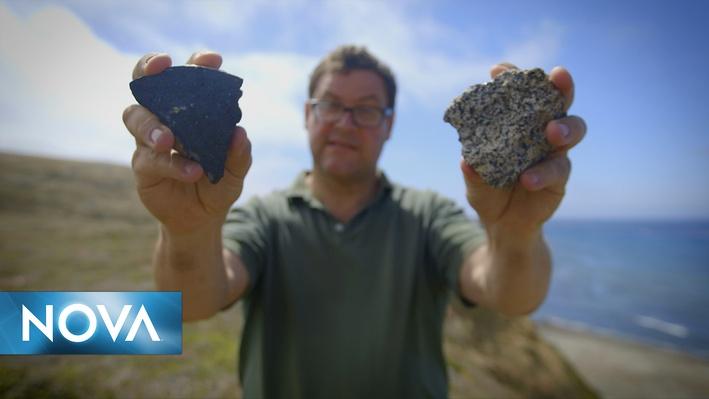
and ...

"Satan's Triangle" gave me nightmares for months after I saw it ...
Posted on 11/13/2018 9:40:34 AM PST by ETL
A new map reveals the remnants of ancient continents that lurk beneath Antarctica's ice.
The map shows that East Antarctica is made up of multiple cratons, which are the cores of continents that came before, according to study leader Jörg Ebbing, a geoscientist at Kiel University in Germany.
"This observation leads back to the break-up of the supercontinent Gondwana and the link of Antarctica to the surrounding continents," Ebbing told Live Science. The findings help reveal fundamental facts about Earth's tectonics and how Antarctica's land and ice sheets interact, he wrote in an email.
Because the continent is so remote and buried in ice, Antarctica is a bit of a blank spot on the geologic map, Ebbing said. The researchers used data from the European Space Agency Gravity Field and Steady-State Ocean Circulation Explorer (GOCE) satellite to fill in the blanks. ..."
They found the evidence of the continent's history as part of Gondwana, a supercontinent made of the modern Southern Hemisphere continents that broke up about 180 million years ago. East Antarctica's crust is thicker than West Antarctica's, at between 25 miles and 37 miles (40 and 60 kilometers) thick, compared with the West's 12 miles and 22 miles (20 and 35 km) thick. The East Antarctic crust is also a mishmash of old cratons, Ebbing said, including the Mawson Craton, which has a matching fragment in southern Australia.
The new data reveal more complexity in East Antarctica's ancient cratons than previously known, Ebbing said. The modern-day continent is also host to regions called orogens, which are crumpled-up regions where ancient continents would have rammed together to build mountains.
(Excerpt) Read more at livescience.com ...
Settled Science?
There are alternative theories that are just as entertaining as the idea of swimming continents.
better animations from cartoonist Neal Adams:
https://www.youtube.com/watch?v=oJfBSc6e7QQ
better explanation from a real geology professor:
https://www.youtube.com/watch?v=dy-b8M_nOcw
Who said that anything here was Settled Science? This isn't GoreBull Warming.
Is it increasing in mass, or is it becoming less dense?

and ...

"Satan's Triangle" gave me nightmares for months after I saw it ...

ML/NJ
Expanding Earth is certainly intriguing.
You don’t believe in continental drift, or plate tectonics?
You ever look at these maps of continental drift and wonder if any other continents or islands existed that were subsided and are now lost?
That’s cool.
“the planet was much warmer than it was today”
Guess the dinosaurs were riding around in SUV’s, because there sure weren’t any humans there to cause global warming.
No.
In fact when I was in college (RPI '68), some speaker came to give a talk about this stuff and he was considered a quack.
Also, there's a big difference between continental drift and the notion that there was a time when there was only one land-mass while water still covered two-thirds of the planet. You sorta have to explain how it got that way; not that the explanations of how the earth formed as we see it are any good either. (E.g.: tell me what the earth was like when it was 7000 miles in diameter, assuming you believe it accreted and it was 7000 miles in diameter sometime.)
ML/NJ
Landmasses usually get plastered onto a continental edge when one plate dives beneath another, especially if the rock consists of lighter, less dense materials, as is the case with continents. Continental rock (typically "granitic" in composition [not necessarily granite, but of the same basic minerals as granite) is different than ocean floor rock. It is less dense and so 'floats' on the denser oceanic (basaltic) rock.
The Museum of Natural History here in New York has a hands-on exhibit where they have two rocks of the same size placed side-by-side, one is granite, the other basalt. There you can easily tell the difference in density between, the basalt being clearly heavier than the granite.

No. In fact when I was in college (RPI '68), some speaker came to give a talk about this stuff and he was considered a quack.
Of course. Back in the 60s, even late 60s, the theory was still pretty much new. Now there is overwhelming evidence to support it.
I actually had a structural geology professor (mid 1970s) who didn’t accept plate tectonics. You just parroted back his convoluted explanation and you were fine. Argue with him and you ended up with a “C”. One of my earliest experiences in finding out that scientists are all too human!

“While early Earth’s undersea surface was made entirely of dark, heavy volcanic rock called basalt, over time, a lighter kind of rock formed. This rock, called granite, was buoyant. It floated up from the ocean floor and gathered in thick layers, creating landmasses that we call continents.”
Lol! Kind of like a lefty "teaching" politics or American history.
yep!
I didn’t make a very good parrot!
Turn left at At the Mountains of Madness. Watch out for the killer Penguins.
Disclaimer: Opinions posted on Free Republic are those of the individual posters and do not necessarily represent the opinion of Free Republic or its management. All materials posted herein are protected by copyright law and the exemption for fair use of copyrighted works.